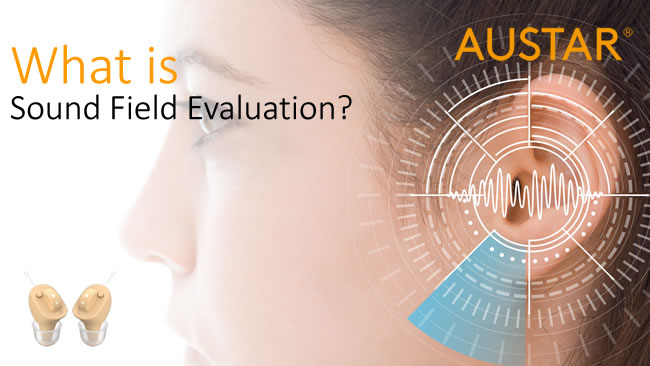- Home
- Hearing Loss
- Audiology
What is sound field evaluation?
2021-12-10Sound field evaluation refers to the evaluation of hearing threshold for hearing aids. Before fitting a hearing aid, you need to do a test-pure tone audiometry, to determine the degree of hearing loss in patients with hearing loss. The result of hearing loss is called hearing threshold.
Optometry is required before fitting glasses, and pure tone audiometry is also required before fitting hearing aids to determine the degree of hearing loss of patients with hearing loss. The result of pure tone audiometry is called "hearing threshold", that is, the minimum amount of sound stimulus that can cause auditory response. Then, after fitting, the user's hearing threshold will be improved to a certain extent, but how much? Can we use pure tone to test the book?

The answer is no, pure tone audiometry is not applicable to the post hearing aid threshold evaluation of test users. First of all, headphones need to be worn during pure tone audiometry. If you wear hearing aids and then headphones, it will easily lead to the "roar" of hearing aids and poor wearing comfort; Secondly, the sound of the headset can not be evenly transmitted to the microphone of the hearing aid, which will lead to large errors. Therefore, we need to use another inspection - sound field evaluation.
Sound field evaluation generally refers to the evaluation of hearing threshold of hearing aid, that is, to test the minimum stimulus that can cause auditory response after hearing aid. The test is required to be carried out in the "sound field", that is, a large sound insulation room. There are one or more speakers in the sound field (generally two). After they are arranged at the specified position, the sound level meter shall also be used for calibration, which is called sound field calibration. After the sound field is established, it must be calibrated, and then every period of time (generally about one month) It needs to be calibrated again, especially after the location of facilities and equipment in the sound field is changed.
Before the test, guide the patient to sit at the "reference point" in the sound field, keep the head looking straight ahead, and wear the hearing aid on one side of the test ear (it is best to clean and maintain it first in the early stage) to ensure that the battery is sufficient, and the hearing aid on the other side remains powered off or removed. The test rules are similar to pure tone audiometry, which is "press the transponder (or raise your hand) when you hear the sound, even if the sound is very small". The difference is that the test sound used for pure tone audiometry is the pure sound of "didi Dudu", while the sound field test uses the singing sound of "Wuwu".
The initial sound intensity is generally 50 ~ 70dB, and the specific test method is also the same as that of pure tone audiometry, i.e. "rise five and fall ten". If the user responds twice after three sounds, the intensity is determined as the hearing aid threshold of the patient's frequency. The thresholds of 250Hz, 500Hz, 1000Hz, 2000Hz, 3000hz and 4000Hz are measured successively, and the hearing curve after hearing aid is obtained, which can be compared with the bare ear threshold intuitively. Hearing aid fitters can also debug hearing aid parameters according to the evaluation results.
However, the sound field evaluation also has its own limitations. It can only reflect the hearing of patients after wearing hearing aids, but can not reflect the hearing of average sound and strong sound. Moreover, the hearing aid threshold is OK, which does not mean that the hearing aid effect is good. Whether the effect is good or not is also closely related to the patient's own resolution, Therefore, it is necessary to conduct comprehensive evaluation in combination with tests such as speech test. In the process of debugging, the fitting technician should also make adjustments in combination with the patient's subjective feelings, and should not only pursue the evaluation results that look good, regardless of the user's feelings.
About AUSTAR Hearing Aids
AUSTAR is a professional hearing aid manufacturer and supplier in China, as well as an OEM hearing aid manufacturer. Specializing in the production of affordable digital OTC and programmable hearing aids, and use our own fitting system software for programming hearing aids to ensure superior quality of hearing aid and make price competitive in this industry.
Hearing aid advantages:
Rich product structure
AUSTAR hearing devices cover traditional hearing centers and hospital fitting hearing aids, as well as online retail OTC hearing aids, with traditional batteries and convenient rechargeable styles to choose from. Common types of hearing aids are: BTE, RIC, CIC, ITC, ITE and BTE open-fit.
Convenient operation
AUSTAR hearing aid products focus on humanized design, sound control, program switching, ergonomic design, to avoid misoperation, and the operation method is suitable for all ages.
Famous brand
The AUSTAR hearing aid brand was founded in 2003, with 18+ years of professional experience in the production and sales of hearing aids, in Europe, North America, Asia, Africa and Latin America, the brand is well-known at home and abroad.
Contact us now to start your hearing aid business.
Latest
Audiology













All 0 comments